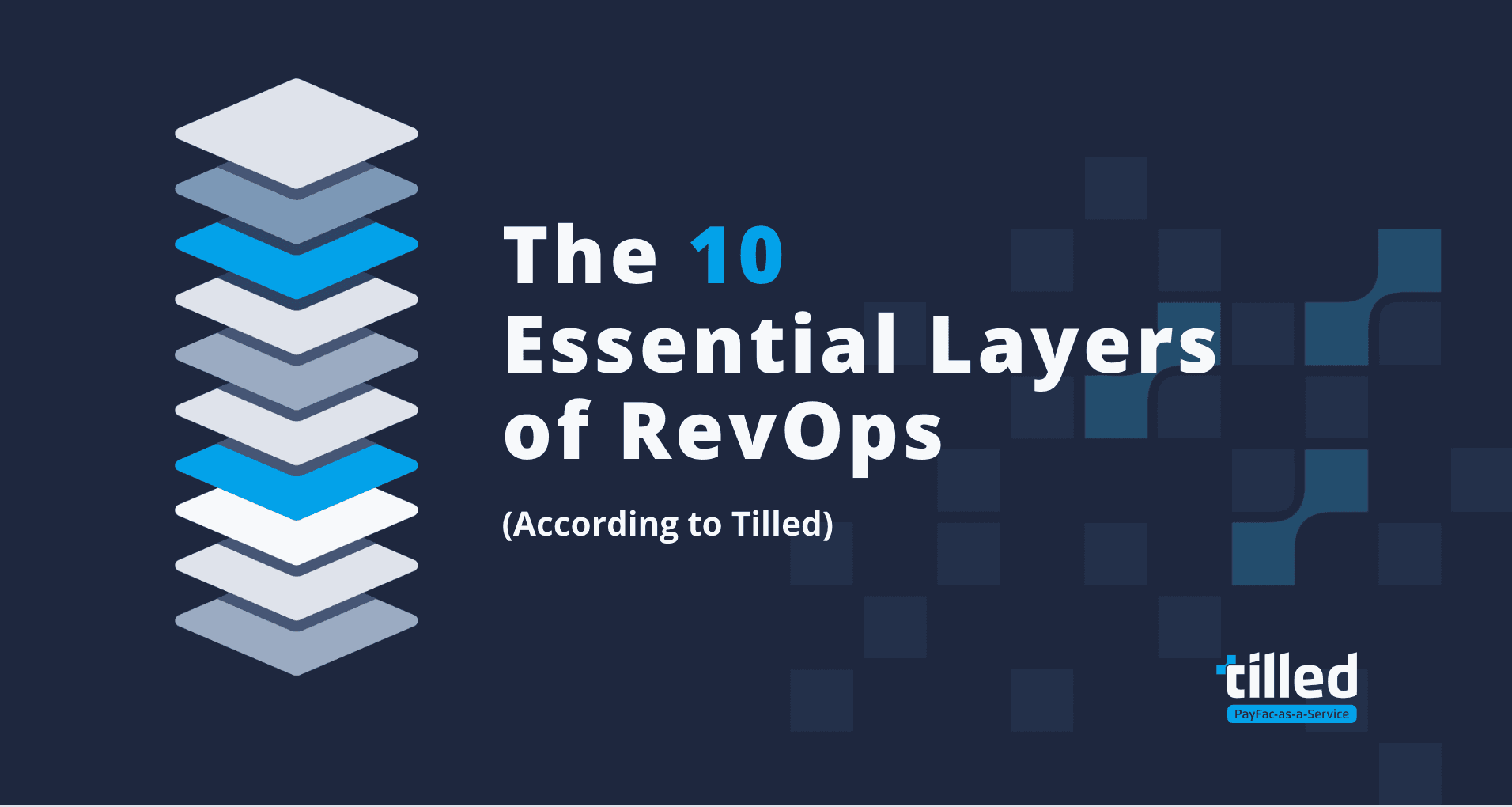Peeling Back the Onion: The 10 Essential Layers of Revenue Operations (According to Tilled)

As a modern software company, adding a Revenue Operations team could be just the thing your business needs to take off in the new year.
With the increase in demand for optimized customer experience and new stressors on a company’s financial performance, the implementation of a RevOps team just might be what your software business is missing. But what even is RevOps, and how can you implement it to help your company maximize their payment facilitator revenue strategy?
Here’s our best definition:
Revenue Operations (or RevOps) is a revenue-focused integration of GTM organizations that aims to reduce technical and operational inefficiencies and facilitate collaboration across sales, marketing, finance and customer success. By creating a cohesive strategy for these core functions – each of which have a direct hand in driving company revenue –teams can work more tactfully and avoid spreading themselves too thin.
The proof is in the pudding, too; According to research done by Boston Consulting Group, the “top B2B tech companies that leaned on Revenue Ops to accelerate their growth experienced significant benefits, including 10% to 20% increases in sales productivity”. Forrester also reports that, on average, aligned companies see 15% more profits* and 19% faster growth. With potential for results like that, it’s understandable why RevOps is an attractive concept for software businesses looking to scale faster. However, before implementing RevOps, or any business function for that matter, it’s important to have a strong understanding of what that function is in order to activate it successfully within your organization.
The Key Ingredients For a Winning RevOps Strategy
While there’s no official RevOps getting started playbook, knowing what factors are involved will certainly set you up for success. Consider the following 10 essential “layers” of Revenue Operations:
1. Customer Journey
The number one purpose of RevOps is to bring together the many divisions of a business and create a cohesive journey. By utilizing the mapping and tracking of a customer’s full journey, we can better anticipate where in their lifecycle they could generate the most revenue and therefore prioritize what stops to make along the way.
2. People
RevOps is its own function in an organization and therefore warrants its own team. Rather than have existing marketing and sales personnel share RevOps responsibilities, it is crucial to implement a designated RevOps team to avoid departments spreading themselves too thin.
3. Data
Whether it is shared or collected, data is crucial in the optimization of end-to-end revenue functionality. When implementing a RevOps team, it’s necessary to leverage data to make more informed business decisions and translate different departments objectives into one cohesive plan.
4. Revenue Enablement
Sales enablement has been around for decades helping businesses create a catalog of sales collateral and revenue enablement is not much different. With the implementation of a RevOps team, revenue enablement refers to the enablement of the whole company and how they generate revenue (marketing and customer success collateral as well).
5. Platforms
RevOps leverages a suite of powerful external technology to automate and manage various tasks. Think tools such as HubSpot, Hootsuite, or customer success platforms like Totango.
6. Analytics
By analyzing data around both company and ISV performance, we can gain powerful insights into patterns and trends and translate as needed into the best course of action for each department.
7. Revenue Finance
This layer of RevOps contains all the elements of your finance functions that are related to revenue, including revenue forecasting, revenue analysis, margin analysis, etc.
8. Performance
Performance as it pertains to RevOps includes a feedback loop between data and analytics to the operations platform. By using this information we can look at key performance metrics for ISVs to better forecast future performance and performance of other ISVs.
9. Predictability
Predictability is an essential part of the Revenue Operations system because with a better expectation of how ISVs will perform, we can more effectively forecast how revenue will be generated therefore creating a very predictable engine and payment facilitator revenue strategy.
10. Fundraising Input of GTM
This layer of RevOps involves gathering data needed to go out and raise money, capital and valuations. With the right metrics from Sales, Marketing, and Success, RevOps can gain the visualization and insights needed to understand our attainable, addressable and total addressable markets. We then can set our internal targets to those attainable and addressable markets, but fundraise for our total addressable market.
Tilled is Pro-RevOps, Too!
RevOps is borderline essential for medium to large size companies, and that includes a growing company like Tilled. With a Revenue Operations team in place, we can make more smart, informed business decisions – a key factor in our payment facilitator revenue strategy and growing a business.
And speaking of growing a business, your software company can generate additional revenue through payment processing by leveraging Tilled’s PayFac-as-a-Service. With our solution, B2B software companies can begin offering a customized payment experience to end-customers and begin monetizing payments through our competitive revenue shares. To learn more about how Tilled can help you maximize your revenue potential, contact our Sales team today!